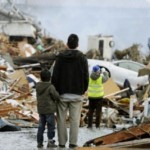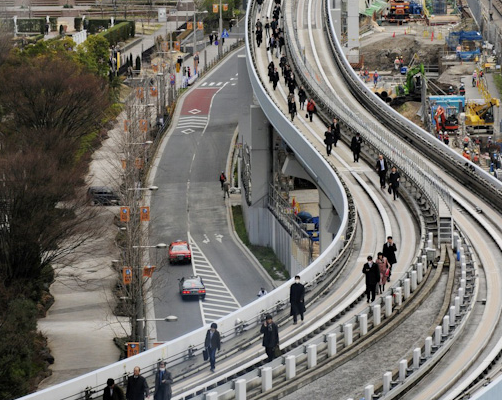Japan Prepared for Wrong Quake
 While scientists in Japan had been predicting a large earthquake for years, they may have spent resources safe-guarding the wrong region.
While scientists in Japan had been predicting a large earthquake for years, they may have spent resources safe-guarding the wrong region.
According to my father, who lives in Tokyo, you would only have noticed there was an earthquake in Tokyo the day before by the many people out on the streets and the helicopters flying regularly overhead. The office building he was working in when the quake hit had been retrofitted so even though the shaking was long and consistent, he was probably in one of the safer places at that moment.
After the initial quake hit, there were aftershocks for the entire afternoon, and even into the next day. An aftershock had taken place just ten minutes before I called to check in with him.
The descriptions I have received of Tokyo are surreal. Thousands were stranded in office towers and business districts because the train and subway services were suspended. Some people faced the prospect of walking more than two or three hours to get home. My father mentioned the sight of confused Tokyo citizens carrying maps in public. Many never had to actually walk home before and now were trying to navigate the crowded and confusing city streets.
The Japan Times has stunning photos of the response from Tokyoites, including one if commuters walking home on the rail overpass:
What is becoming clear from news reports is that while Japan’s industrial and economic heartland has not been harmed, the city at the epicenter of the quake, Sendai, has not fared well. The Japan Times reports that between 200 and 300 bodies have been found and that the death toll will reach the low thousands. The situation at the Fukushima No. 1 nuclear power plant also remains precarious.
While scientists in Japan had been predicting that a large earthquake was due to strike for years, what is surprising is that they expected it to come from a different set of tectonic plates.
Japanese geologists have long forecast a huge earthquake along a major plate boundary southwest of Tokyo, and have poured enormous resources into monitoring the faint traces of strain building in that portion of the earth's crust. They have predicted in great detail the amount of property damage and the number of landslides such a tremor would generate. They even gave the conjectured event a name: The Tokai Earthquake.
The quake that actually took place did so in a completely different area. The epicenter of the earthquake was about 15 miles below the sea floor and about 80 miles east of the coastal city of Sendai.
But although this is a seismic zone, part of the so-called Ring of Fire that lines much of the Pacific, until recently it wasn't considered one of Japan's most vulnerable areas.
* * *
The most amusing news story to have emerged from this tragedy? “Japan earthquake will have no impact on Ohio: But expert says Pacific rim shakers are common.”
Follow Noah on Twitter: @noahkgreen
Tweet


